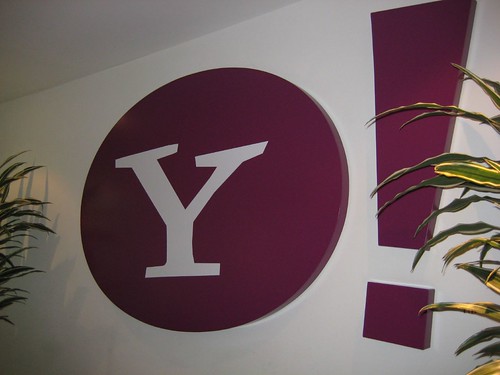1. Bachelor in Tourism Studies - Travel and Tourism.
2. Basic Course in Airlines,Travel Agency & Tour Operation Management.
3. Certificate Course in Tourism Studies.
4. Certificate Course in Travel & Tourism
5. Diploma in Tourism and Hotel Management.
6. Diploma in Travel & Tourism.
7. Master in Travel Administration.
8. Vocational Course in Travel & Tourism.
9. Master of Tourism Administration(MTA).
10. Master of Business Administration(MBA).
11. PG Diploma in Travel and Tourism
List of Institutions In India: - Institutes offering Master of Tourism Administration & PG Courses:
1. Al-Ameen Institute of Management Studies, Hosur Road (Opp. Lalbagh Main Gate), Bangalore-560 027.
2. Awadesh Pratap Singh University, Rewa, MP.
3. Bundelkhand University, School of Tourism & Hotel Management, Kanpur Road, Jhansi-284128, UP.
4. Centre for Tourism and Travel Management Studies, Jiwaji University, Gwalior-474 001.
5. Centre for Tourism Studies, Pondicherry University, Pondicherry-605 014, Tamil Nadu.
6. Dayananda Sagar Institutions, Kumaraswamy Layout, Near Banashankari Temple, Bangalore-560 078.
7. Department of Business Management, Punjabi University, Patiala-147 002.
8. HNB Garhwal University, Department of Tourism, Srinagar (garhwal)-246 174.
9. Himachal Pradesh University, Institute of Management Studies, H.P. University, Shimla-171 005, Himachal Pradesh.
10. Institute of Management Studies, Devi Ahilya University, Indore-452 001, Madhya Pradesh.
11. Institute of Social Sciences and Research, "Green woods", Jobberpet, Vellore-63 006. Tamil NAdu.
12. Institute of Tourism Studies, Lucknow University, Lucknow-226 007, Uttar Pradesh.
13. Jai Narain University, Department of Management Studies, Jaswant Campus, Jodhpur-342 001.
14. Kurukshetra University, Kurukshetra-136 119, Haryana.
15. Madurai Kamraj University, Directorate of Distance Education, Palkalai Nagar, Madurai-625 021.
16. Marathwada University, Aurangabad-431 004, Maharashtra.
17. Mother Teresa Women's University, Kodaikanal-624 102, Temil NAdu.
18. Sri Krishnadevaraya University, Anantapur-515 003, Andhra Pradesh.
Other Courses in Travel & Tourism:
1. Barkatullah University's Stuy Centre, Directorate of Continuing Education, People's Action Trust, F-55/107, Katwaria Sarai, New Delhi-110 016 offers Post Graduate Diploma in tourism & Hotel Management (Correspondence Degree Course).
2.Directorate of Distance Education, Pondicherry University, Pondicherry-605 014 - offers 1-yers Post Graduate Diploma in tourism Administration (PGDTA) through correspondence.
3. Indira Gandhi National Open University, School of Social Sciences, Maidan Garhi, New Delhi-110 068. offers Masters in tourism Management. Duration: Minimum 2 years and maximum 4 years.
4. Kerala Institute of Tourism and Travel Studies (KITTS), Thiruvananthapuram (Established and run by the Ministry of Tourism, Govt. of Kerala) offers Post Graduate Diploma in Business Administration (Tourism).
5. Mother Teresa Women's University, Women's University College, Kodaikanal-624 102 offers 2-year MA (Tourism & Travel Management)
IATA Courses: International Air Transport Association (LATA) is a world orgnisation of transport with head offices at Geneva.
IATA provides travel, tourism and cargo industry recognised standard in training.
IATA/UFTAA Standard, Advanced & Travel Agents, Marketing Courses.IATA/FLATA Cargo Agents Introductory, InternationalAir Cargo Rating, Dangerous Goods Refresher Courses.
List of IATA/UFTAA and LATA/FIATA Authorised Training Centres in India:
1. Chavara School of Tourism Studies, Chavara Centra Road, Near South Railway Station, Kochi-682 011, Ph: 0484-2377341.
2. Globe College of Travel and Tourism, Mangalore
3. Hindustan Marine Electronics Inst. Ludhiana.
4. IATA/FLATA Cargo Intro/Rating/DG Steps, Calcutta.
5. IATA India, Apeejay Chambers 3rd Floor, Wallace Street, Fort, Mumbai-400 001.
6. IHCTM, Colaba, Mumbai, Branch: Mumbai-Mahim
7. India, International Trade Center. Center Narinian Point, Mumbai, Branches: Bangalore, New Delhi.
8. Institute of Air Travel Studies, Central Junction, Adoor-691 523, Kerala.
9. Institute of Airlines and Travel Agencies, Chennai.
10. International Air Fare Desk, Mumbai-Colaba, Branch: Ahmedabad.
11. International Airline Academy, Chennai.
12. School of Airline & Travel Management, 35/1148, Warriam Road, Cochin-682 016.
13. SITA Academy, New Delhi.
14. Skyline Education Institute, New Delhi.
15. Speedwings Academy for Aviation Services, 44/962A, Enchakalody Buildings, L.F.C. Road, Kaloor, Cochin-682 017.
16. Swastik School of Travel and Tourism Studies, Swastik Centre, M.G. Road, Thiruvananthapuram-685 001.
17. Trade Wings Institute of Management, Mumbai-Fort, Branches: Chennai, Pune, Bangalore, Secunderabad, Goa, New Delhi, Calcutta.
18. Training Institute for Travel Trade, New Delhi, Branch: Mumbai-Andheri East.
19. Travel Millennium, Kochulloor, Thiruvananthapuram-695 011.
20. Vista Cocord School of Airlines & Travel Studies, Calcutta.
21. Kuoni Academy of Travel - KAT Head office: Kuoni House, 5th Floor, N F Road, Colaba, Mumbai 400001 Ph: (00 91 200) 6656 2000 Fax: (00 91 22) 6656 2009 Email: web@kuoniacademy.co.in Website: www.kuoniacademy.co.in
International Reference:
1. Institute of Travel and Tourism, 113 Victoria Street, ST. Albans, Herts, AL1 3TJ.
2. The Travel Training Company, The Cornerstone, The Broadway, Working, Survey GU SAR.
3. The Institute of Certified Travel Agents, P.O. Box 812059, 48 Linden Street, Wellesley, MA 02181-0012.







